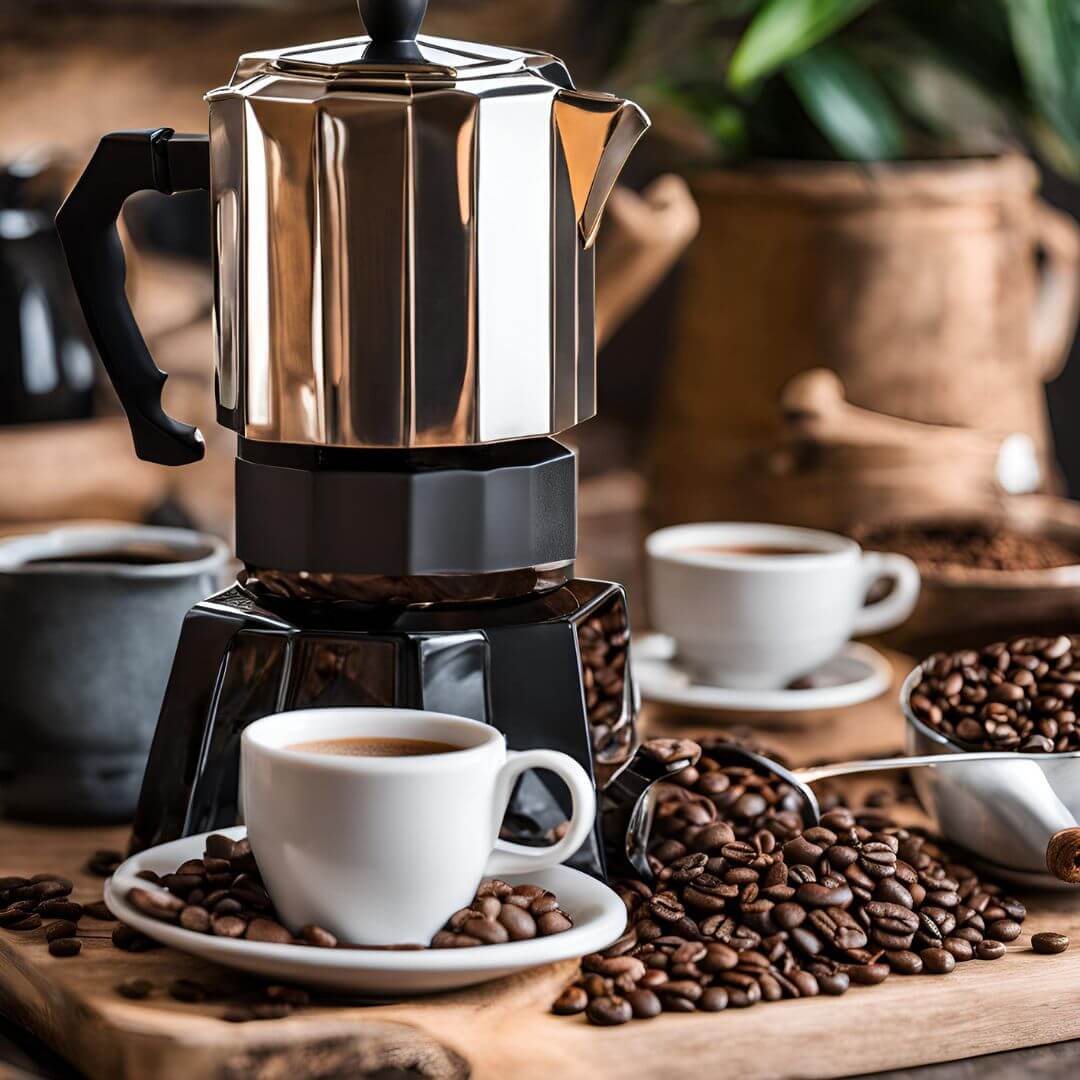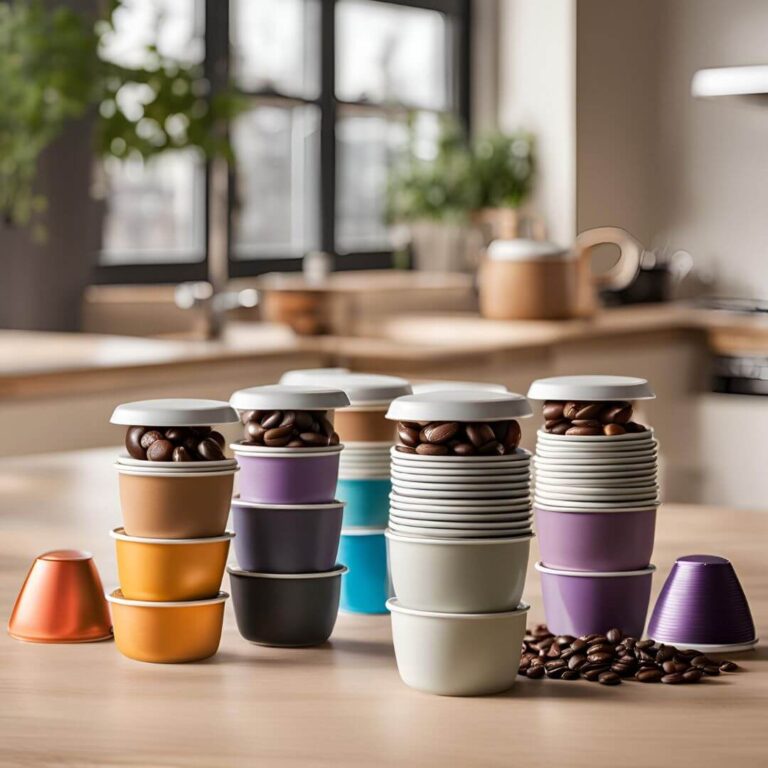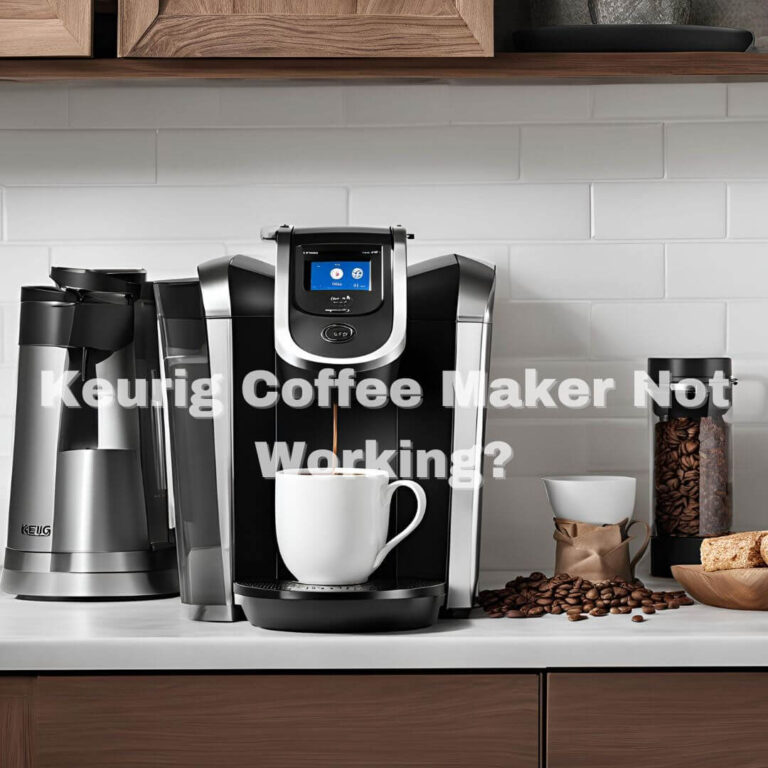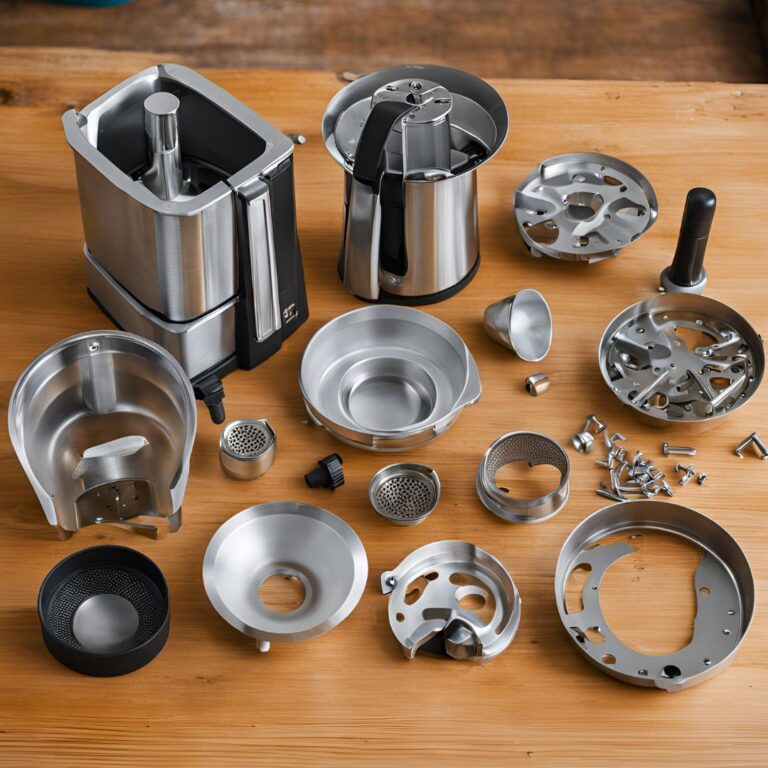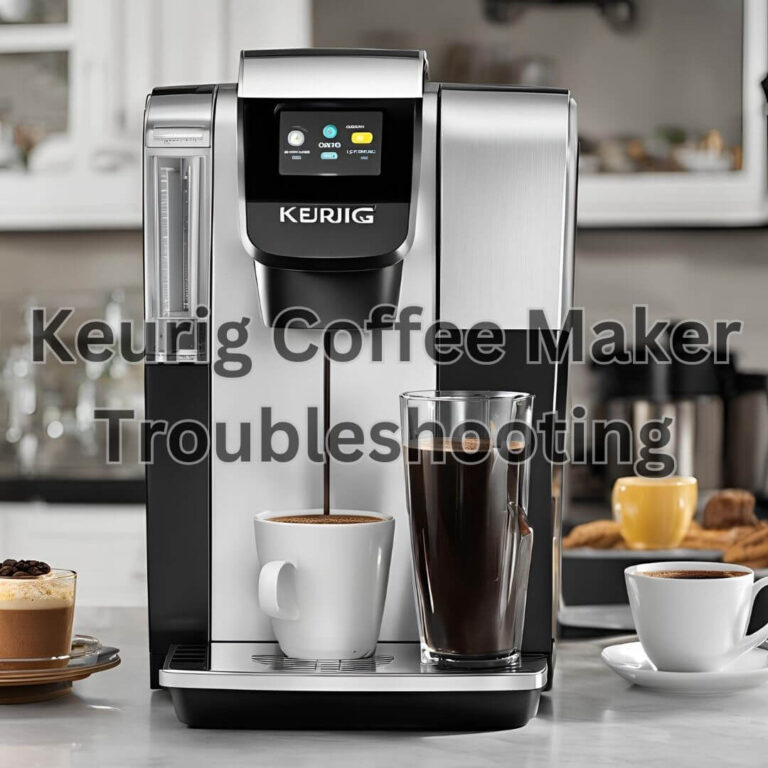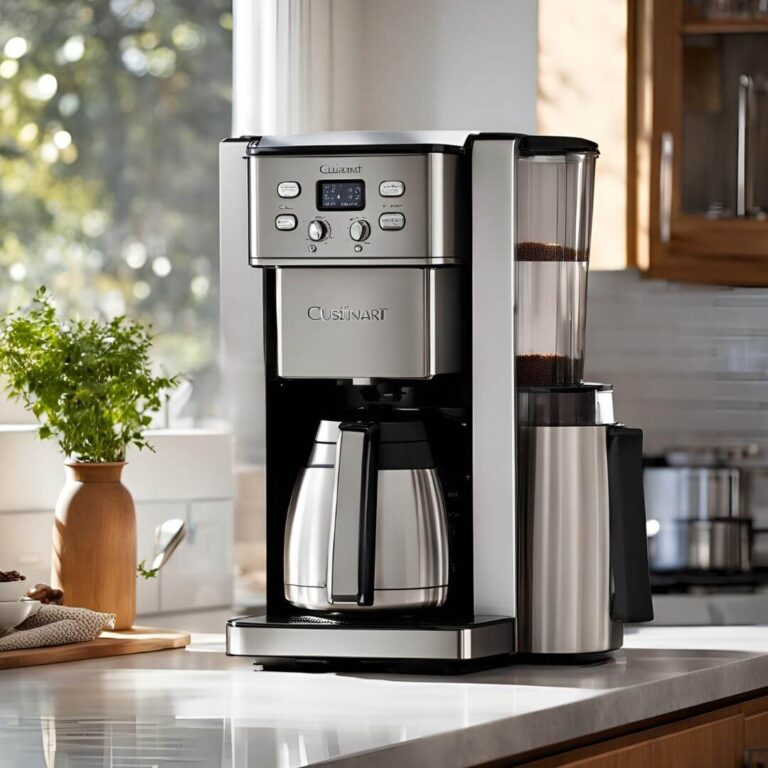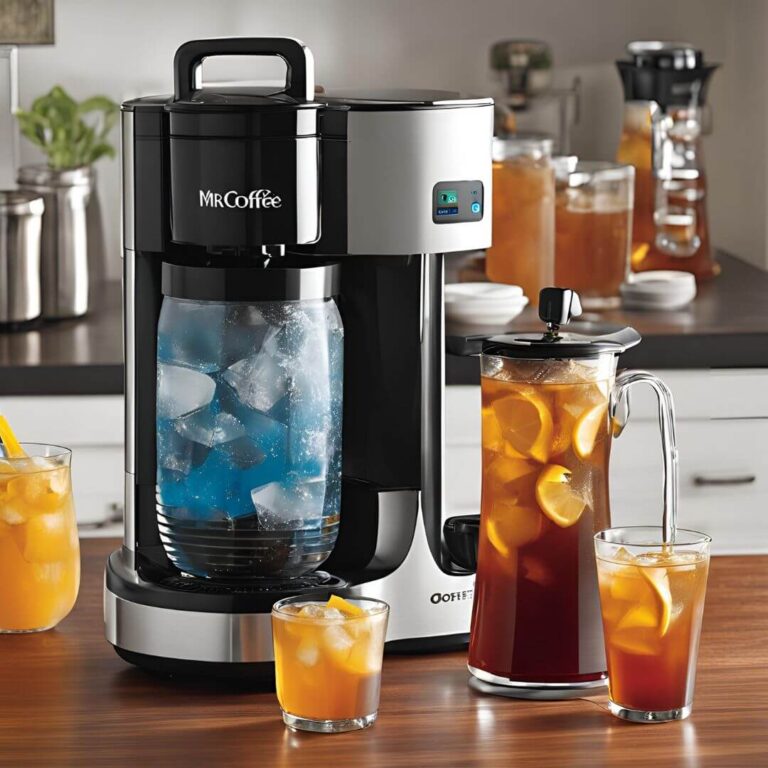Complete Guide to the Best Coffee for Moka Pots

Remember that first sip of coffee from your grandma’s stovetop coffee maker? That rich, almost-espresso taste that filled the whole kitchen with its aroma? Well, guess what – that little aluminum pot is making a huge comeback, and for good reason!
If you’ve got a moka pot sitting in your cupboard (or you’re thinking about getting one), you’re in for a treat. But here’s the thing – not all coffee works the same in these Italian beauties. Pick the wrong beans, and you’ll end up with bitter mud instead of liquid gold.
Don’t worry though! We’re gonna walk through everything you need to know about finding the best coffee for your Moka pot. From picking the right roast to avoiding rookie mistakes, we’ve got you covered. Let’s dive in!
Understanding Moka Pot Coffee Brewing
How Moka Pots Work
Okay, so how does this little metal contraption actually work? It’s pretty clever, actually!
Your moka pot has three main parts:
- Bottom chamber – where the water goes
- Middle basket – where you put the coffee
- Top chamber – where the magic happens
When you heat it up, the water in the bottom turns to steam. This steam pushes the hot water up through the coffee grounds and into the top chamber. Think of it like a mini volcano, but instead of lava, you get coffee!
The pressure isn’t as intense as an espresso machine (we’re talking about 1-2 bars versus 9 bars), but it’s enough to extract those deep, rich flavors we all love. And that’s exactly why your coffee choice matters so much – the wrong grind or roast can throw everything off.
What Makes Coffee “Best” for Moka Pots
Not all coffee is created equal, especially when it comes to moka pot brewing. Here’s what you need to look for:
Flavor profile – You want something that can handle the intense extraction without turning bitter. Think chocolatey, nutty, or caramel notes rather than super bright, fruity ones.
Grind size – This is huge! Too fine and you’ll clog everything up. Too coarse and you’ll get weak, watery coffee. You’re aiming for something between table salt and sand – finer than drip, but coarser than espresso.
Roast level – Medium to medium-dark roasts are your sweet spot. They’ve got enough body to stand up to the brewing method without being too oily or burnt-tasting.
Bean origin – Some beans just work better. Brazilian, Colombian, and Central American coffees tend to shine in a moka pot.
Complete Guide to Coffee Types for Moka Pots
Best Roast Levels for Moka Pots
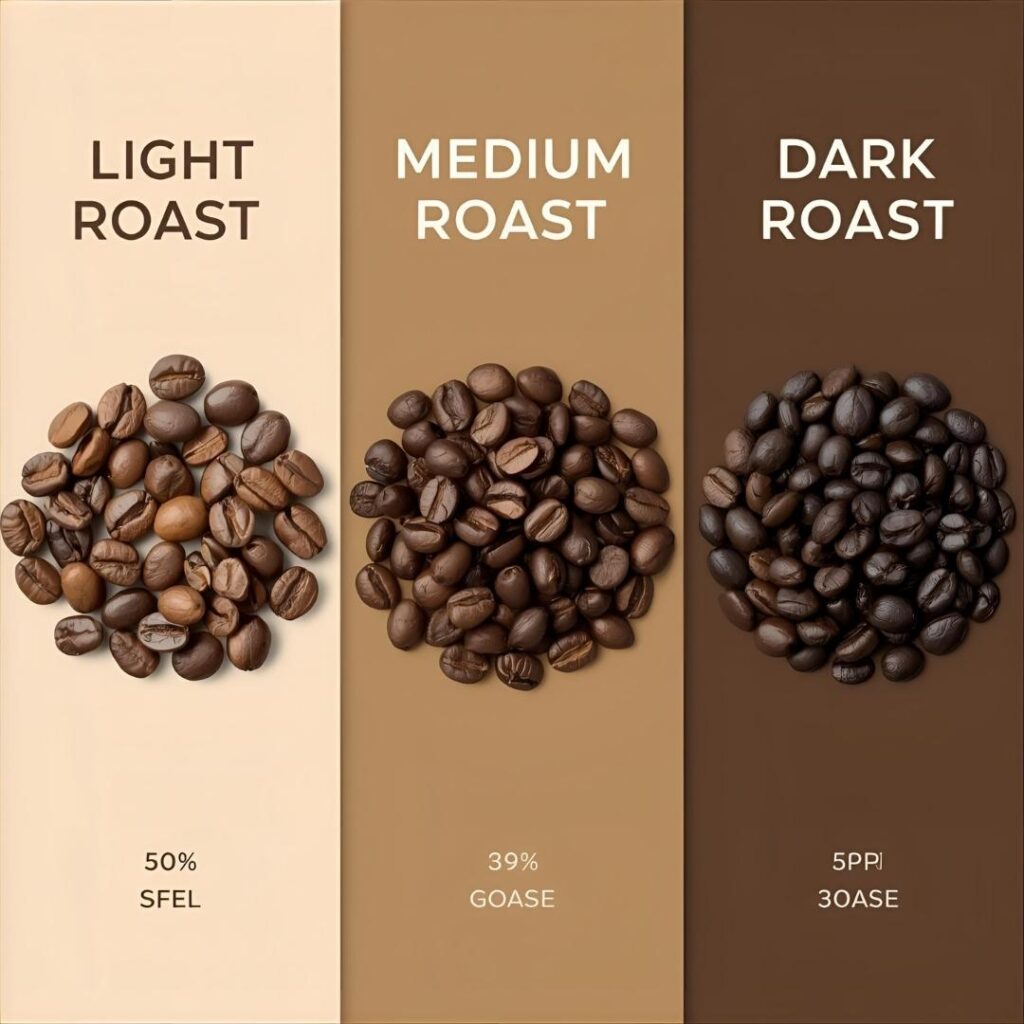
Let me tell you about roast levels – this can make or break your morning cup!
Medium Roasts: Your Best Bet
Medium roasts are like the Goldilocks of moka pot coffee – not too light, not too dark, just right! They’ve got:
- Balanced flavor without overwhelming bitterness
- Natural sweetness that really pops
- Less oil on the surface (which means less gunk in your pot)
- Perfect extraction every single time
I switched to medium roast about a year ago, and wow, what a difference! My morning coffee went from “okay” to “can’t start my day without it.”
Dark Roasts: For Bold Coffee Lovers
Love that punch-in-the-face coffee strength? Dark roasts might be your thing:
- Rich, bold flavors
- Lower acidity (easier on the stomach)
- More body and texture
- That classic “Italian coffee” taste
Just watch out – they can go bitter real quick if you’re not careful with your brewing time.
Light Roasts: Proceed with Caution
Look, I’m not saying you can’t use light roasts, but… they’re tricky:
- Higher acidity can taste sour
- Harder to extract properly
- Often lack the body you want
- Better suited for pour-over methods
If you absolutely must use light roast, grind it a bit finer and use slightly hotter water.
Bean Origins and Varieties
Single-Origin vs. Blends
Here’s the deal with single-origin versus blends:
Single-origin beans are like that friend who’s super passionate about one thing – they’ve got personality! But in a moka pot, that personality can be too much. Blends, on the other hand, are team players. They’re designed to work together, creating a balanced cup that just works.
My advice? Start with a good Italian-style blend. Once you’ve got your brewing down, then experiment with single-origins.
Arabica vs. Robusta
Arabica beans are the smooth talkers – refined, complex, a bit fancy. Robusta beans are the workhorses – strong, bold, with twice the caffeine. Most Italian blends mix both, and there’s a reason for that! The Arabica brings flavor complexity, while the Robusta adds body and that signature crema on top.
Regional Characteristics
Different regions produce different flavors:
- Brazilian – Nutty, chocolatey, low acidity
- Colombian – Balanced, caramel sweetness
- Ethiopian – Fruity and floral (better for other brewing methods)
- Guatemalan – Chocolate and spice notes
- Indonesian – Earthy, herbal, full-bodied
Grind Size Mastery
Listen up, because this is where most people mess up their moka pot coffee!
The perfect grind sits right between drip and espresso – think kosher salt or coarse sand. Too fine? You’ll over-extract and get bitter coffee (plus risk clogging your pot). Too coarse? Weak, sad coffee that tastes like brown water.
Here’s my trick: If you’re buying pre-ground, look for “moka pot grind” or “stovetop espresso grind” on the package. Using a grinder at home? Start with a medium setting and adjust from there. Your first cup will tell you everything – bitter means go coarser, weak means go finer.
Pro tip: Invest in a decent burr grinder if you can. Blade grinders are like using a chainsaw for surgery – they work, but the results aren’t pretty.
Top 10 Best Coffee Brands for Moka Pot
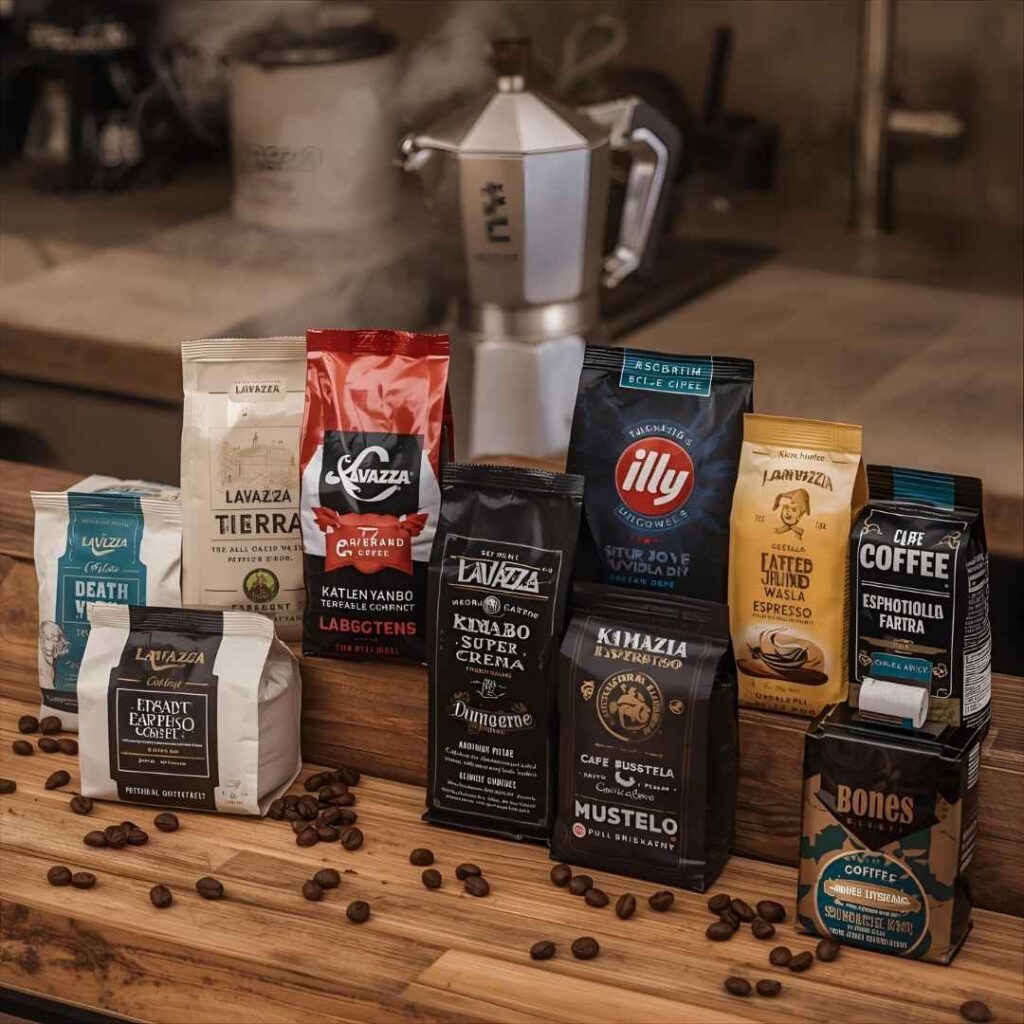
Premium Whole Bean Options
1. Lavazza Tierra for Cuba Organic
Man, this coffee is something special! I picked up a bag on a whim, and it’s become my go-to weekend treat.
Features:
- 100% organic Cuban-style beans
- Chocolate and dried fruit notes
- Mix of Arabica and Robusta
- Medium roast with 7/10 intensity
Pros:
- That chocolate flavor is no joke – it’s like dessert in a cup
- Organic certification means you’re doing right by the planet
- Perfect balance – not too strong, not too weak
- Stays fresh in those 180g bags
Cons:
- Might be too mellow if you like your coffee to kick you in the teeth
- Organic = pricier (but worth it, in my opinion)
- Not super complex – it’s good, but not mind-blowing
Best brewing tip: Use water that’s just off the boil, not cold. Makes all the difference!
2. Illy Whole Bean Coffee
Illy is like that reliable friend who never lets you down. Consistent, smooth, and always good.
Features:
- 100% Arabica beans
- Medium roast
- Signature smooth taste
- Pressure-packed for freshness
Pros:
- Crazy consistent – every bag tastes the same
- Super smooth, no bitterness
- That tin keeps beans fresh forever
- Works in any moka pot size
Cons:
- Kinda pricey for everyday drinking
- Some folks find it too mild
- All Arabica means less crema
3. Lavazza Super Crema
This one’s a crowd-pleaser! I serve this when friends come over, and everyone asks what it is.
Features:
- 60% Arabica, 40% Robusta blend
- Medium roast
- Honey and almond notes
- Velvety crema layer
Pros:
- Lives up to its name – that crema is gorgeous
- Sweet without adding sugar
- Great value for the quality
- Perfect for milk drinks too
Cons:
- Can be too sweet for black coffee purists
- Needs careful temperature control
- Goes stale quicker than vacuum-packed options
4. Kimbo Napoletano
Want authentic Italian coffee? This is it, folks. It’s what they actually drink in Naples!
Features:
- Dark roast
- Traditional Neapolitan blend
- Full body
- Low acidity
Pros:
- Bold without being bitter
- That authentic Italian taste
- Great price point
- Makes killer cappuccinos
Cons:
- Might be too intense for newbies
- Dark roast means more oils to clean
- Hard to find in regular stores
5. Death Wish Coffee (Dark Roast)
Not for the faint of heart! This stuff will wake the dead (hence the name).
Features:
- Extra-strong blend
- USDA organic
- Fair trade certified
- Seriously high caffeine content
Pros:
- Caffeine content is through the roof
- Surprisingly smooth for how strong it is
- Organic and fair trade
- Money-back guarantee
Cons:
- Can be overwhelming in a moka pot
- Expensive
- Not for afternoon drinking (unless you hate sleep)
Best Pre-Ground Coffee for Moka Pot
6. Lavazza Caffe Espresso
This is my everyday coffee – reliable, tasty, and doesn’t break the bank.
Features:
- Medium roast
- Pre-ground for convenience
- Classic espresso blend
- Comes in 8 oz bags (2-pack available)
Pros:
- Perfect grind size for moka pot
- Rich but not overpowering
- Great value with the 2-pack
- No grinding hassle
Cons:
- Loses freshness faster than whole beans
- Medium roast might be boring for adventurous types
- 8 oz goes quick if you drink a lot
7. Cafe Bustelo Espresso Ground Coffee
The budget champion! This Cuban-style coffee punches way above its weight class.
Features:
- Dark roast
- Fine grind
- Bold flavor
- Vacuum-packed brick
Pros:
- Dirt cheap but tastes expensive
- Bold flavor that cuts through milk
- Available literally everywhere
- That vacuum pack keeps it fresh
Cons:
- Can be bitter if over-extracted
- Grind is almost too fine for some pots
- Not subtle – it’s in-your-face coffee
8. Medaglia d’Oro Espresso
An Italian-American classic that’s been around since forever – and for good reason!
Features:
- Double roasted
- Traditional Italian style
- Fine grind
- Tin packaging
Pros:
- Authentic old-school taste
- That tin is reusable
- Consistent quality
- Perfect for traditional preparation
Cons:
- Very fine grind can clog smaller pots
- Tin doesn’t reseal well
- Strong taste isn’t for everyone
9. Bones Coffee Macamaniac
Okay, this one’s different – macadamia and coconut flavored coffee. Sounds weird, works great!
Features:
- Macadamia and coconut flavor
- Low acid
- 100% Arabica
- Medium roast
Pros:
- Unique tropical twist
- Super gentle on the stomach
- Smooth as silk
- Great conversation starter
Cons:
- Flavored coffee isn’t everyone’s thing
- More expensive than regular coffee
- 12 oz package doesn’t last long
- Some purists will judge you
10. Bones Coffee World Tour Sample Pack
Can’t decide? Try ’em all! This sampler pack is like a coffee passport.
Features:
- 5 different single-origin coffees
- 4 oz each
- All medium roast
- Gift box presentation
Pros:
- Perfect for finding your favorite
- Makes a great gift
- Pre-ground convenience
- Fun way to learn about coffee
Cons:
- 4 oz samples go fast
- All medium roast (no variety there)
- Pricey per ounce
- Once it’s ground, clock’s ticking on freshness
Lavazza Coffee Deep Dive for Moka Pots
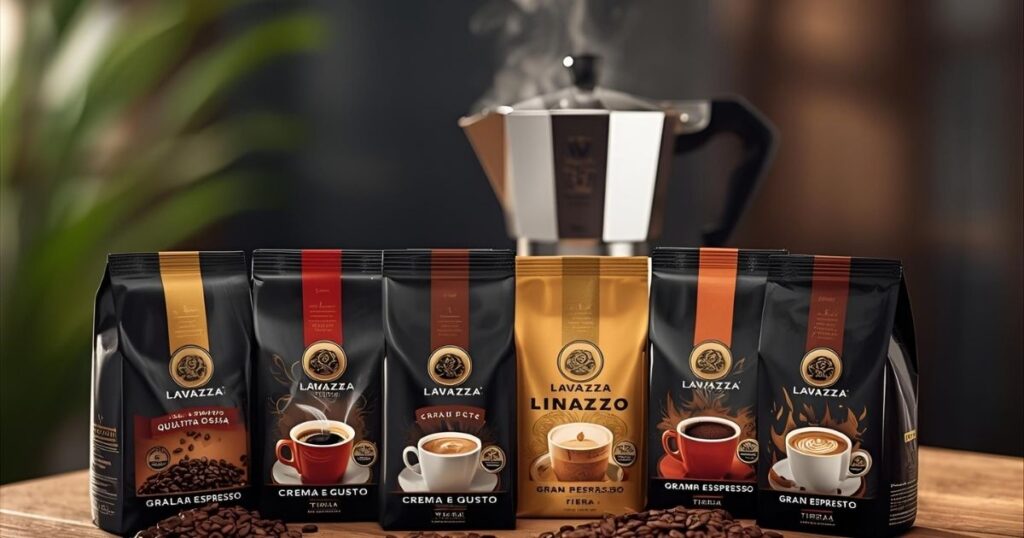
Why Lavazza Excels in Moka Pots
You know how Italian grandmas always seem to make the best pasta? Well, Lavazza is like that, but for coffee. They’ve been making coffee specifically for moka pots since 1895 – that’s over a century of getting it just right!
The secret? They roast their beans knowing exactly how a moka pot extracts coffee. It’s not too oily (which clogs things up), not too dry (which tastes like cardboard), but juuust right. Plus, they blend their beans specifically for that pressure extraction. It’s like they designed it in a lab, except it’s just generations of Italian coffee wisdom.
Best Lavazza Varieties for Moka Pots
Let me break down the Lavazza lineup for you:
Lavazza Qualità Rossa The everyday hero. This is what most Italian families have in their pantry. It’s got a medium roast with hints of chocolate and dried fruit. Not too fancy, not too plain – just good, honest coffee that works every single time.
Lavazza Crema e Gusto This one’s got more oomph! It’s darker and stronger, with a bit of Robusta mixed in for that extra kick. Perfect for those mornings when you need coffee that fights back. Makes amazing cappuccinos too.
Lavazza Gran Espresso The fancy one. All Arabica, medium roast, super smooth. It’s what you serve when the in-laws come over. More expensive? Yeah. Worth it? Absolutely.
Lavazza Perfetto New kid on the block, but already a favorite. It’s designed specifically for moka pots (finally, someone gets it!). Full-bodied, rich, with notes of caramel and chocolate. If you’re only gonna try one, make it this.
Lavazza Tierra (Already reviewed above) The organic option that doesn’t sacrifice flavor for sustainability.
Lavazza Buying Guide
Where to Shop:
- Amazon – Usually the best prices, especially if you bulk buy
- Italian grocery stores – More variety, fresher stock
- Costco – Great for bulk buying Qualità Rossa
- Target/Walmart – Limited selection but convenient
Price Breakdown: Budget: Qualità Rossa ($8-10/bag) Mid-range: Crema e Gusto ($10-12/bag) Splurge: Gran Espresso ($12-15/bag)
Storage Tips: Once you open that bag, transfer it to an airtight container. Trust me on this – I learned the hard way. Keep it somewhere cool and dark (not the fridge though – moisture is the enemy!). Use within 2-3 weeks for best flavor.
Pre-Ground vs. Whole Bean: The Complete Analysis
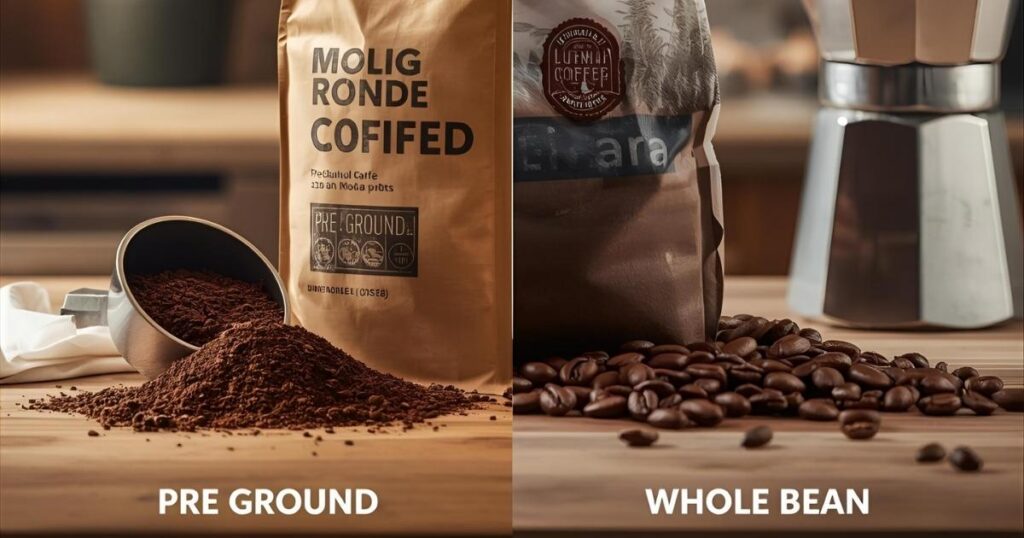
Advantages of Pre-Ground Coffee for Moka Pots
Look, I get it – not everyone wants to deal with grinding beans at 6 AM. Pre-ground has its place!
Why pre-ground rocks:
- Zero effort – open, scoop, brew
- Consistent grind size (no guessing!)
- Cheaper than buying a grinder
- Perfect for travel or the office
The best pre-ground brands nail the grind size for moka pots. Lavazza, Illy, and Kimbo have been doing this forever – they know what works.
Benefits of Whole Bean Coffee
But here’s the thing – whole bean is where the magic happens.
Why I switched to whole bean:
- Freshness that’ll blow your mind
- You control the grind (dial in that perfect cup)
- Way more flavor complexity
- Actually cheaper per cup in the long run
That moment when you grind fresh beans and the aroma fills your kitchen? That’s what coffee’s supposed to smell like! Pre-ground can’t touch that.
Making the Right Choice
So which should you choose? Here’s my take:
Go pre-ground if:
- You’re just starting with moka pots
- Convenience is king
- You drink coffee occasionally
- Budget’s tight (no grinder purchase)
Go whole bean if:
- You’re serious about flavor
- You drink coffee daily
- You’ve got $30+ for a decent grinder
- You enjoy the ritual
There’s no wrong answer here – good coffee is good coffee, whether it’s pre-ground or freshly ground!
Advanced Moka Pot Coffee Selection Guide
Coffee Selection by Taste Preference
Let’s match your taste buds to the perfect coffee!
Bold and Strong: You want coffee that stands up and salutes? Go for:
- Dark Italian roasts
- Robusta blends
- Death Wish Coffee
- Cafe Bustelo
These bad boys will put hair on your chest (figuratively speaking).
Smooth and Balanced: More of a middle-of-the-road person? Try:
- Medium roasts
- 100% Arabica blends
- Illy Classico
- Lavazza Super Crema
These are your everyday, no-drama coffees that just work.
Fruity and Bright: Adventurous? These might surprise you:
- Light-medium Ethiopian beans
- Costa Rican single-origins
- Colombian supremo
- Guatemalan Antigua
Fair warning: These can be tricky in a moka pot, but when you nail it… chef’s kiss!
Chocolatey and Rich: Got a sweet tooth? You’ll love:
- Brazilian Santos
- Lavazza Tierra
- Mexican Chiapas
- Peruvian beans
These taste like dessert without the calories!
Seasonal Coffee Selections
Yeah, coffee can be seasonal – who knew?
Summer Brewing: When it’s hot out, go lighter! Medium roasts with fruity notes make great iced coffee from your moka pot. Try Colombian or Costa Rican beans. Pro tip: Brew strong, pour over ice, add a splash of milk – boom, you’ve got iced latte!
Winter Warming: Cold weather calls for dark, rich roasts. Indonesian or Brazilian beans with their earthy, warming notes hit different when there’s snow outside. Add a dash of cinnamon to your grounds – thank me later!
Holiday Specials: October through December, keep an eye out for special blends. Many roasters do limited editions with notes of spice, chocolate, or even maple. They’re usually pricier, but hey, treat yourself!
Budget-Friendly vs. Premium Options
Let’s talk money – because good coffee doesn’t have to cost a fortune.
Best Value Champions:
- Cafe Bustelo ($4-5/pack)
- Medaglia d’Oro ($6-7/can)
- Lavazza Qualità Rossa ($8-9/bag)
These give you 80% of the flavor for 50% of the price. Do the math!
When to Splurge:
- Special occasions
- Weekend brewing
- When you find “the one”
- Gift giving
Cost Per Cup Reality Check: Even “expensive” coffee is cheap per cup. A $15 bag makes about 20 cups – that’s 75 cents each. Your local coffee shop charges $3-5 for worse coffee!
Expert Brewing Tips and Techniques
The 6 Essential Steps for Perfect Moka Pot Coffee
After years of trial and error (and some truly terrible coffee), here’s my foolproof method:
1. Start with hot water This changed everything for me! Use hot (not boiling) water in the base. Cold water = bitter coffee because the pot sits on heat too long.
2. Don’t pack the grounds Fill the basket, level it off with a knife, but never tamp! This isn’t an espresso machine. Packed grounds = clogged pot = coffee explosion. Not fun.
3. Watch your heat Medium heat, folks. Low and slow is the way to go. High heat makes angry, bitter coffee.
4. Listen for the gurgle When you hear that gurgling sound, you’re almost done. Once it sounds like it’s struggling, get it off the heat immediately!
5. Stop the extraction Run the base under cold water to stop brewing. This prevents that burnt taste that ruins everything.
6. Clean it right Just hot water, no soap! Dry completely before storing. That coffee residue people say adds flavor? Nah, it just makes bitter coffee.
Troubleshooting Common Issues
Bitter Coffee?
- Water too hot
- Grounds too fine
- Brewing too long
- Old, stale beans
Fix: Lower heat, coarser grind, remove from heat sooner, buy fresh beans!
Weak Coffee?
- Grounds too coarse
- Not enough coffee
- Water not hot enough
- Pot needs deep clean
Fix: Finer grind, fill basket properly, pre-heat water, clean thoroughly!
Sputtering and Spraying?
- Heat too high
- Overfilled water chamber
- Grounds too fine
- Gasket needs replacing
Fix: Lower heat, check water level, adjust grind, replace gasket (they’re cheap!)
Advanced Techniques
Wanna level up? Try these pro moves:
Water Quality Matters Filtered water makes better coffee. Period. Your tap water tastes weird? So will your coffee.
Pre-Infusion Method Add just enough hot water to wet the grounds, wait 30 seconds, then add the rest. More even extraction = better flavor.
Temperature Control Use a thermometer – water should be 160-170°F when you start. Any hotter and you’ll scorch those grounds.
Coffee Storage and Freshness Guide
Proper Storage Methods
Let’s keep that coffee tasting fresh!
Whole Bean Storage:
- Airtight container (glass or ceramic is best)
- Cool, dark place (not the fridge!)
- Away from the stove
- Use within 2-3 weeks of roasting
Ground Coffee Storage:
- Airtight container is non-negotiable
- Use within a week (it goes stale fast!)
- Keep the original bag inside the container
- Write the date you opened it
What NOT to do:
- Don’t freeze (unless long-term storage)
- Don’t refrigerate (moisture = mold)
- Don’t leave bag open
- Don’t buy more than you’ll use in a month
Freshness Indicators
How do you know if your coffee’s past its prime?
Fresh coffee:
- Strong aroma when you open the bag
- Visible oils on dark roasts
- Blooms when hot water hits it
- Tastes complex and layered
Stale coffee:
- Barely any smell
- Looks dull and dry
- Flat, cardboard taste
- No crema in your moka pot
The sniff test never lies – if it doesn’t smell good, it won’t taste good!
Frequently Asked Questions
Core Questions
“Which coffee for moka pot is absolutely best?”
Honestly? The best coffee is the one YOU like! But if you want my personal pick, Lavazza Perfetto is designed specifically for moka pots and nails it every time. Can’t go wrong with that.
“Can I use regular ground coffee in a moka pot?”
You can, but it might not be ideal. Regular ground coffee is usually too coarse for a moka pot. You want something finer – between drip and espresso grind. Many regular grounds will give you weak, watery coffee.
“How fine should I grind coffee for moka pot?”
Think table salt or fine sand – finer than drip, coarser than espresso. When you rub it between your fingers, it should feel gritty but not powdery. Too fine and you’ll clog the pot; too coarse and you’ll get dishwater.
“What’s the difference between moka pot coffee and espresso?”
Great question! Espresso uses 9 bars of pressure; moka pots use 1-2 bars. Espresso is more concentrated, has more crema, and uses a finer grind. Moka pot coffee is strong but not quite espresso – think of it as espresso’s laid-back cousin.
Specific Brand Questions
“Is Lavazza good for moka pot?”
Absolutely! Lavazza literally grew up with moka pots – they’re both Italian classics. Most Lavazza blends are perfect for moka pot brewing, especially Perfetto, Qualità Rossa, and Crema e Gusto.
“What’s the best Italian coffee for moka pot?”
The classics never fail:
- Lavazza (any variety)
- Illy (smooth and refined)
- Kimbo (authentic Neapolitan)
- Segafredo (bold and traditional)
Can’t go wrong with any of these!
“Can I use French roast in a moka pot?”
You can, but watch out – French roast is super dark and oily. It can clog your pot and taste burnt if you’re not careful. If you love French roast, grind it slightly coarser and use lower heat.
Technical Questions
“How much coffee should I use in a moka pot?”
Fill the basket completely but don’t pack it down! Level it off with a knife. The amount depends on your pot size:
- 1-cup pot: about 7g
- 3-cup pot: about 15g
- 6-cup pot: about 30g
Remember: “cups” in moka pot language are tiny Italian espresso cups, not American mugs!
“Why does my moka pot coffee taste bitter?”
Nine times outta ten, it’s one of these:
- Heat too high (most common!)
- Leaving it on heat too long
- Grind too fine
- Old, stale coffee
- Dirty pot (oils go rancid)
“How do I make stronger moka pot coffee?”
Want more kick? Try these:
- Use more coffee (fill that basket!)
- Slightly finer grind
- Darker roast
- Add some Robusta beans
- Use less water (stop brewing earlier)
Comparison Charts and Quick Reference
Quick Selection Chart
Roast Level Guide:
- Light Roast: Skip it (too acidic for moka pot)
- Medium Roast: Perfect! (balanced and smooth)
- Medium-Dark: Great choice (rich without bitterness)
- Dark Roast: Good but watch temperature (can burn easily)
- French/Italian Roast: Proceed with caution (very oily)
Grind Size Visual:
- Turkish (powder): Too fine – will clog
- Espresso (fine powder): Still too fine
- Moka/Stovetop (table salt): PERFECT!
- Drip (coarse salt): Too coarse
- French Press (breadcrumbs): Way too coarse
Price Categories:
- Budget ($4-7): Bustelo, Medaglia d’Oro
- Mid-Range ($8-12): Lavazza, Illy
- Premium ($13-20): Specialty roasters, Death Wish
- Luxury ($20+): Blue Mountain, Kona
Brewing Parameter Chart
Coffee-to-Water Ratios:
- Standard: 1:7 ratio
- Strong: 1:5 ratio
- Mild: 1:10 ratio
Brewing Times:
- 1-cup pot: 3-4 minutes
- 3-cup pot: 4-5 minutes
- 6-cup pot: 5-6 minutes
- 9-cup pot: 6-8 minutes
Temperature Guide:
- Water start: 160-170°F
- Stove setting: Medium-low
- Remove when: Gurgling starts
- Never exceed: 200°F
Final Recommendations and Conclusion
Top Picks Summary
After all that, here are my absolute favorites:
Best Overall: Lavazza Perfetto Made for moka pots, tastes amazing, reasonable price. If you buy just one coffee, make it this.
Best Value: Cafe Bustelo Dirt cheap but tastes like it costs three times more. Your wallet will thank you!
Best Premium: Illy Whole Bean When you want to impress or treat yourself. Smooth, refined, consistently excellent.
Best for Beginners: Lavazza Qualità Rossa Forgiving, widely available, and hard to mess up. Perfect training wheels for moka pot newbies.
Best Pre-Ground: Lavazza Caffe Espresso Convenient, properly ground, and actually tastes fresh. No grinder? No problem!
Key Takeaways
Here’s what really matters:
Remember These Golden Rules:
- Medium to medium-dark roasts work best
- Grind size is crucial (table salt texture)
- Hot water start = better coffee
- Medium-low heat always
- Clean pot = happy coffee
Avoid These Rookie Mistakes:
- Don’t pack the grounds
- Don’t use cold water
- Don’t leave on heat too long
- Don’t use soap to clean
- Don’t buy more than a month’s supply
Your Next Steps:
- Pick a coffee from our list (start with Lavazza if unsure)
- Dial in your grind size
- Practice the hot water method
- Experiment with different beans
- Enjoy amazing coffee every day!
Additional Resources
Where to Buy
Online Shopping:
- Amazon – Huge selection, subscribe-and-save discounts
- Whole Foods online – Good for organic options
- Williams-Sonoma – Premium selections
- Direct from roasters – Freshest option
Local Options:
- Italian markets – Best for authentic brands
- Specialty coffee shops – Fresh roasted beans
- Costco – Bulk buying for families
- Target/Walmart – Basic selections
For Italian Brands:
- Eataly (online or stores)
- Italian Food Online Store
- Gustiamo.com
- Local Italian delis
Related Equipment
Grinder Recommendations:
- Budget: Hario Mini Mill ($30)
- Mid-range: Baratza Encore ($140)
- Premium: Eureka Mignon ($300+)
Moka Pot Maintenance:
- Replacement gaskets (change yearly)
- New filter plates
- Descaling solution
- Soft brush for cleaning
Storage Solutions:
- Airscape canister (pushes air out)
- Mason jars (cheap and effective)
- Vacuum containers
- Coffee-specific storage bags
There you have it – everything you need to know about finding the best coffee for your moka pot! Remember, coffee’s supposed to be fun, not stressful. Start simple, experiment when you’re ready, and most importantly, enjoy the journey.
Now go make yourself a cup – you’ve earned it after reading all this! And hey, once you nail that perfect brew with your moka pot, your mornings will never be the same. Trust me on this one!
FAQ About Moka Pot
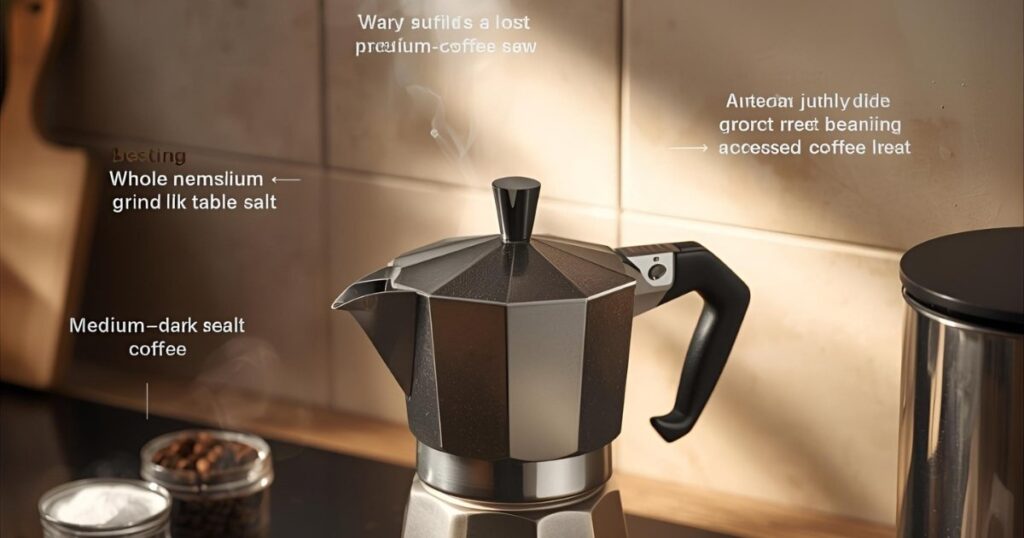
1. Which coffee is best for a moka pot?
The best coffee for a moka pot is typically a medium to medium-dark roast with a grind size between table salt and sand. Italian-style blends like Lavazza Perfetto, Illy, or Kimbo Napoletano work perfectly. Avoid very light roasts as they can taste sour.
2. Can I use regular ground coffee in a moka pot?
You can, but regular pre-ground coffee is often too coarse for moka pots. For optimal flavor, use a grind labeled “moka pot” or “stovetop espresso,” which is finer than drip coffee but coarser than espresso grind.
3. How fine should I grind coffee for a moka pot?
The ideal grind is gritty like table salt or coarse sand. Too fine can clog the pot and cause bitter coffee; too coarse produces weak, watery coffee. Adjust based on taste: bitter → coarser, weak → finer.
4. What’s the difference between moka pot coffee and espresso?
Moka pots brew coffee at 1-2 bars of pressure, whereas espresso machines use 9 bars. Moka coffee is strong and flavorful but less concentrated, with less crema. Think of it as espresso’s relaxed cousin.
5. How much coffee should I use in a moka pot?
Fill the basket completely but don’t pack the grounds. Approximate amounts:
- 1-cup pot: 7g
- 3-cup pot: 15g
- 6-cup pot: 30g
6. Why does my moka pot coffee taste bitter?
Common causes:
- Water too hot
- Brewing too long
- Grounds too fine
- Old or stale beans
- Dirty pot with leftover oils
Fix by adjusting heat, grind size, or freshness of beans.
7. How can I make stronger moka pot coffee?
Use slightly finer grind, more coffee, darker roast, or add Robusta beans. Brewing less water or stopping extraction earlier can also increase strength.
8. Can I use French roast in a moka pot?
Yes, but French roasts are very dark and oily. They may clog your moka pot or taste burnt. Grind slightly coarser and use lower heat to avoid bitterness.
9. Should I use whole bean or pre-ground coffee?
- Whole bean: Best for freshness, flavor complexity, and grind control. Ideal if you drink daily and enjoy the ritual.
- Pre-ground: Convenient, consistent grind, good for occasional use or travel. Brands like Lavazza, Illy, and Kimbo are optimized for moka pots.
10. How should I store coffee for a moka pot?
- Whole beans: airtight container, cool and dark place, use within 2-3 weeks.
- Ground coffee: airtight container, use within a week.
Avoid freezing or refrigerating, as moisture damages flavor.
11. What are the best coffee brands for moka pots?
Top recommended brands: Lavazza (Perfetto, Qualità Rossa, Crema e Gusto), Illy, Kimbo Napoletano, Cafe Bustelo, Medaglia d’Oro, Death Wish Coffee. Choose based on taste preference and roast level.
12. How do I clean and maintain my moka pot?
Rinse with hot water only—no soap. Dry completely to prevent bitterness. Replace gaskets yearly, and clean filter plates regularly.
13. What roast level is ideal for moka pot coffee?
Medium and medium-dark roasts are ideal. They balance flavor, avoid excessive bitterness, and produce a full-bodied cup. Light roasts are tricky due to high acidity, and very dark roasts can taste burnt.
14. Can I make iced coffee with a moka pot?
Yes! Brew medium roasts strong, pour over ice, and add milk if desired. Lightly fruity beans from Colombia or Costa Rica work well for summer iced coffee.
15. How can I troubleshoot sputtering or spraying in my moka pot?
Possible causes: overfilled water, too fine grounds, excessive heat, or worn gasket. Adjust water level, grind size, and heat, and replace gasket if needed.

